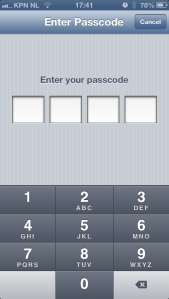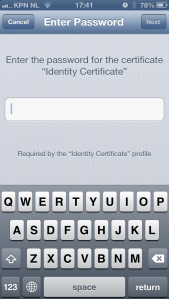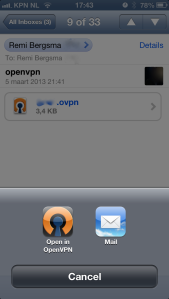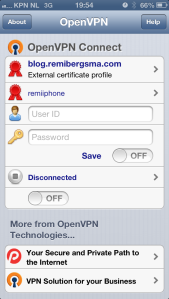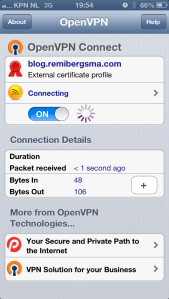Recently I was looking for a way to SSH from a network that blocked my outgoing SSH connection. I’d be nice to have a way around firewalls and be able to access your private Linux terminal. To be able to debug a problem from an remote location, for example.
A collegue suggested a tool called ‘Shell In A Box‘. Shell In A Box implements a web server that can export arbitrary command line tools to a web based terminal emulator using just JavaScript and CSS without any additional browser plugins. This means: connecting your browser via HTTPS to your own hosted Shell In A Box web site, and access a Linux terminal from there.
How cool is that? In this blog I’ll show you how to set it up in a secure way.
Building and installing Shell In A Box
I want to setup Shell In A Box on my Raspberry Pi. It’s a great device running Linux that has a very small energy consumption footprint. Ideal for an always-on device I’d say!
Since there is no package available, we’ve to compile our own. It’s best to get the sources from Github (original here), since the Github repository contains some patches and fixes for issues on Firefox.
These commands install the required dependencies, clone the Git repository and start building:
apt-get install git dpkg-dev debhelper autotools-dev libssl-dev libpam0g-dev zlib1g-dev libssl1.0.0 libpam0g openssl git clone https://github.com/pythonanywhere/shellinabox_fork cd shellinabox_fork dpkg-buildpackage
During my first attempt, I ran into this problem:
dpkg-source -b shellinabox-2.14
dpkg-source: error: can't build with source format '3.0 (quilt)': no upstream tarball found at ../shellinabox_2.14.orig.tar.{bz2,gz,lzma,xz}
dpkg-buildpackage: error: dpkg-source -b shellinabox-2.14 gave error exit status 255
When grepping for ‘quilt’ I found a file called ‘/debian/source/format’. From what I can tell this does not do anything important, so I ended up deleting the file. Guess what, it now works.
rm ./debian/source/format
Build the package again, this should now succeed.
dpkg-buildpackage
This process will take some time (especially on the Raspberry Pi). Afterwards you’ll find the .deb file ready to be installed.
dpkg -i ../shellinabox_2.14-1_armhf.deb
I changed the configuration, to disallow the build-in SSL and to bind to localhost only. I did this because another web server will serve our terminal. I will explain in a minute.
vim /etc/default/shellinabox
And edit this line:
SHELLINABOX_ARGS="--no-beep -s /terminal:LOGIN --disable-ssl --localhost-only"
Finally, restart the deamon:
/etc/init.d/shellinabox restart
And check if all went well:
/etc/init.d/shellinabox status
You should see:
Shell In A Box Daemon is running
Another way to verify is to check the open ports:
netstat -ntl
You should see:
Active Internet connections (only servers) Proto Recv-Q Send-Q Local Address Foreign Address State tcp 0 0 127.0.0.1:4200 0.0.0.0:* LISTEN
Setting up Lighttpd as a proxy
Shell In A Box runs on port 4200 by default. Although this can be changed to a more common 80 or even 443, this is not what I want. I decided to integrate it with another webserver, to be able to combine other services and use just one url (and one SSL certificate). Since the Raspberry Pi isn’t that powerful, I choose Lighttpd.
apt-get instal lighttpd cd /etc/lighttpd/conf-enabled ln -s ../conf-available/10-proxy.conf
This installs Lighttpd and enables Proxy support. Now add the Proxy config:
vim /etc/lighttpd/lighttpd.conf
And add:
proxy.server = (
"/terminal" =>
( (
"host" => "127.0.0.1",
"port" => 4200
) )
)
Save and restart Lighttpd:
/etc/init.d/lighttpd restart
Connect to http://pi.example.org/terminal and your Shell In A Box terminal should appear.
Although this is cool already, we’re not quite there. No one will SSH on an unencrypted web page, right? So, we’ll configure an SSL certificate to enable encryption. For double safety, we’ll also set a username/password on the web page. One then needs to know this password to access the login promt, and needs a valid local username/password to really use the terminal.
Adding encryption with SSL
By using a HTTPS-url, our traffic is encrypted. Let’s generate a private key (and remove the passphrase):
openssl genrsa -des3 -out pi.example.org.key 2048 cp -pr pi.example.org.key pi.example.org.key.passwd openssl rsa -in pi.example.org.key.passwd -out pi.example.org.key
If you do not remove the passphrase, you will need to type it every time you start the web server. To request a SSL-certificate, you need to supply a CSR (Certificate Signing Request) and send that to a SSL provider such as Thawte or Verisign.
openssl req -new -key pi.example.org.key -out pi.example.org.csr
To be able to continue now, let’s self-sign the certificate:
openssl x509 -in pi.example.org.csr -out pi.example.org.pem -req -signkey pi.example.org.key -days 365 cat pi.example.org.key >> pi.example.org.pem
A self-signed certificate will display a warning in our browser, but that’s ok for now. Once the real certificate comes back from our SSL provider, it’s easy to replace it. The warning will then disappear.
Time to tell Lighttpd about our certificate:
vim /etc/lighttpd/lighttpd.conf
Add these lines:
$SERVER["socket"] == "10.0.0.10:443" {
ssl.engine = "enable"
ssl.pemfile = "/etc/lighttpd/ssl/pi.example.org/pi.example.org.pem"
server.name = "pi.example.org"
server.document-root = "/home/lighttpd/pi.example.org/https"
server.errorlog = "/var/log/lighttpd/pi.example.org_serror.log"
accesslog.filename = "/var/log/lighttpd/pi.example.org_saccess.log"
}
And restart Lighttpd:
/etc/init.d/lighttpd restart
Now Shell In A Box should be available on: https://pi.example.org/terminal
Enhancing security by adding HTTP-auth
Since the /terminal page now makes an actual terminal available to web users, I added an extra password for security. You can use the ‘HTTP Auth’ method for this. It will pop up a message box that requires an valid username/password before the /terminal page is shown.
First enable the module:
cd /etc/lighttpd/conf-enabled ln -s ../conf-available/05-auth.conf
Then extend the config of the virtual host config you created above. The final result should be:
$SERVER["socket"] == "10.0.0.10:443" {
ssl.engine = "enable"
ssl.pemfile = "/etc/lighttpd/ssl/pi.example.org/pi.example.org.pem"
server.name = "pi.example.org"
server.document-root = "/home/lighttpd/pi.example.org/https"
server.errorlog = "/var/log/lighttpd/pi.example.org_serror.log"
accesslog.filename = "/var/log/lighttpd/pi.example.org_saccess.log"
auth.debug = 2
auth.backend = "htpasswd"
auth.backend.htpasswd.userfile = "/etc/lighttpd/shellinabox-htpasswd"
auth.require = ( "/terminal/" =>
(
"method" => "basic",
"realm" => "Password protected area",
"require" => "user=remibergsma"
)
)
}
Reload Lighttpd to make the changes active:
/etc/init.d/lighttpd reload
To set a password:
apt-get install apache2-utils htpasswd -c -m /etc/lighttpd/shellinabox-htpasswd remibergsma
You can enter multiple users, just remember to remove the ‘-c’ flag when adding more users, as this overwrites the current file.
When you visit https://pi.example.org/terminal you will need to enter a valid username and password, before the page loads.
The final result: SSH in a browser window!
You should now be able to use a terminal via your own protected webpage. It’s mostly like a real terminal/SSH session but from a browser. Wow 🙂

Shell In A Box in action
I always use GNU Screen, so I know for sure my commands keep running whatever happens.
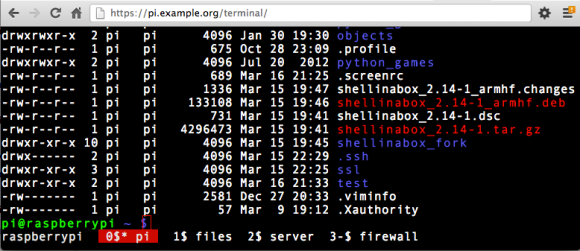
Using GNU Screen in a browser






